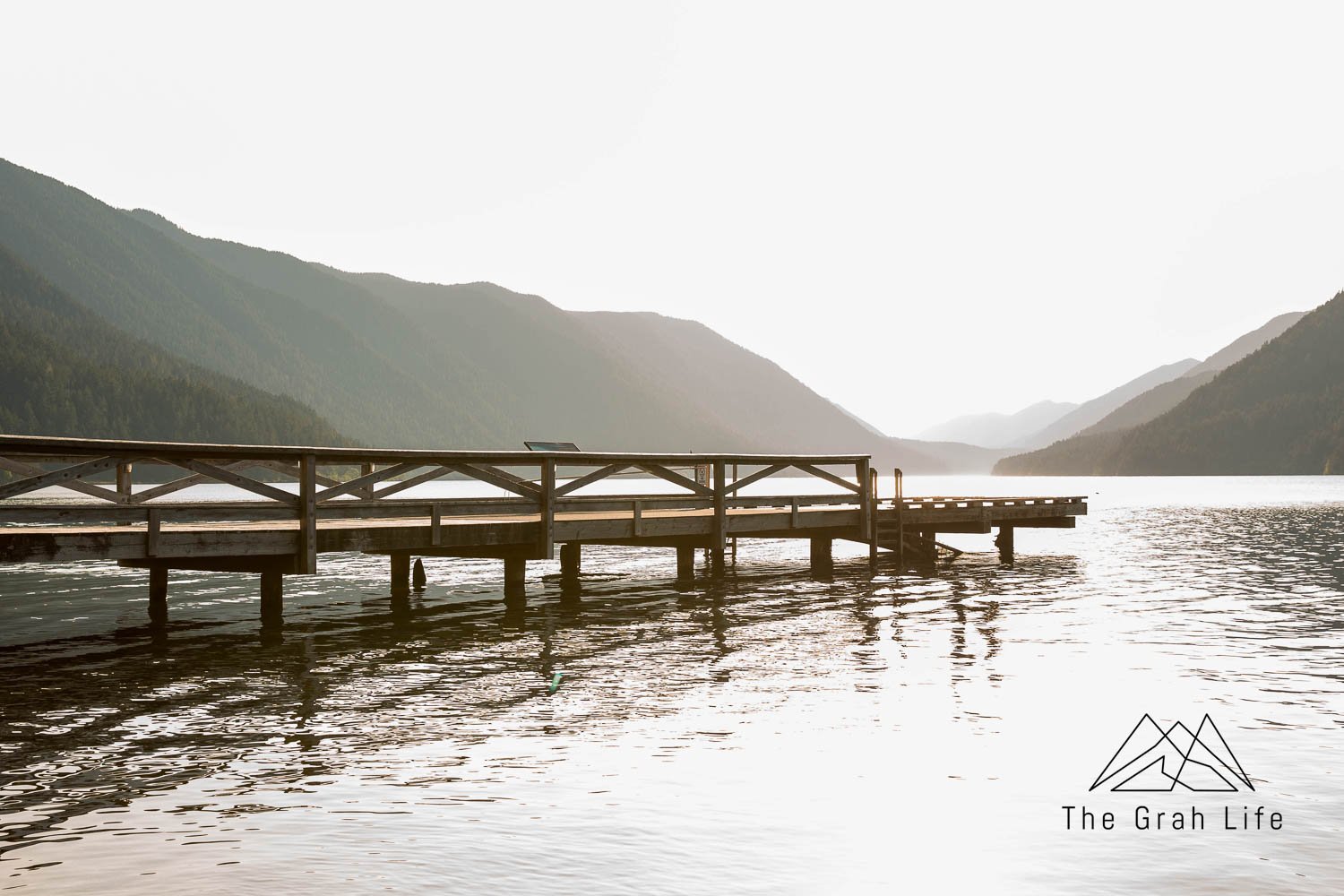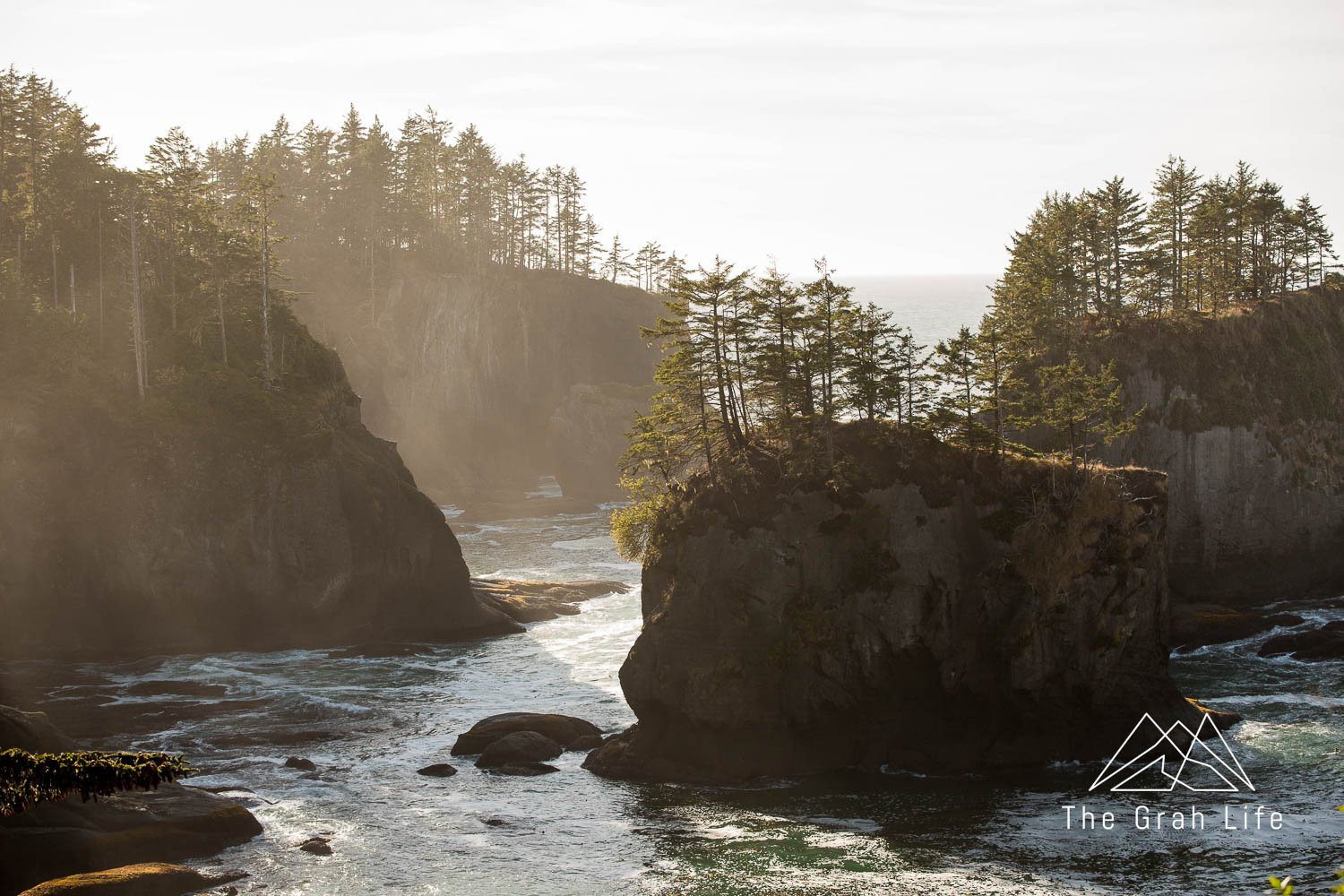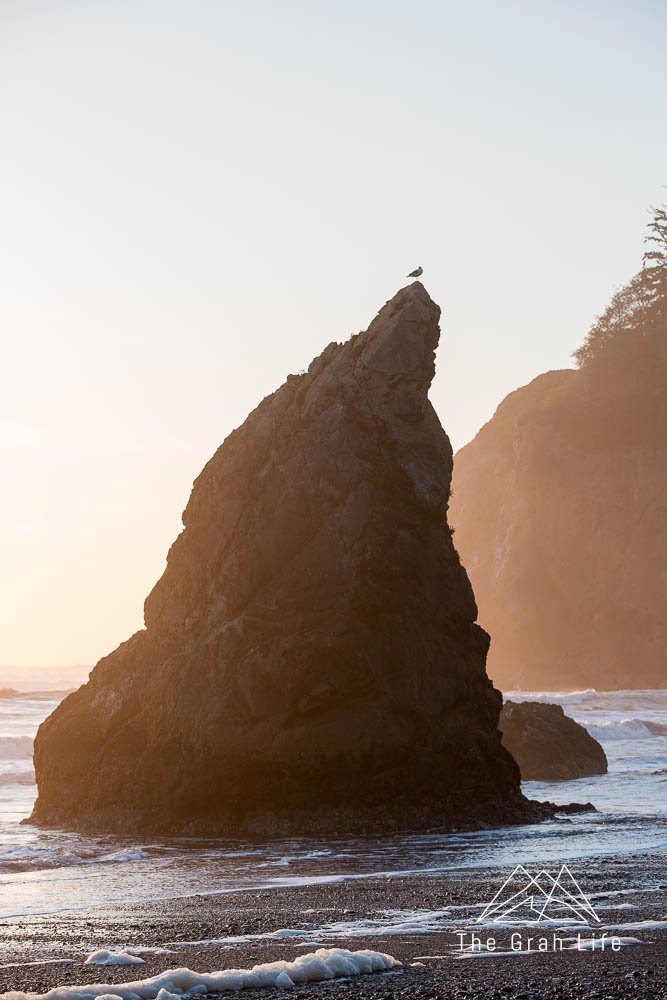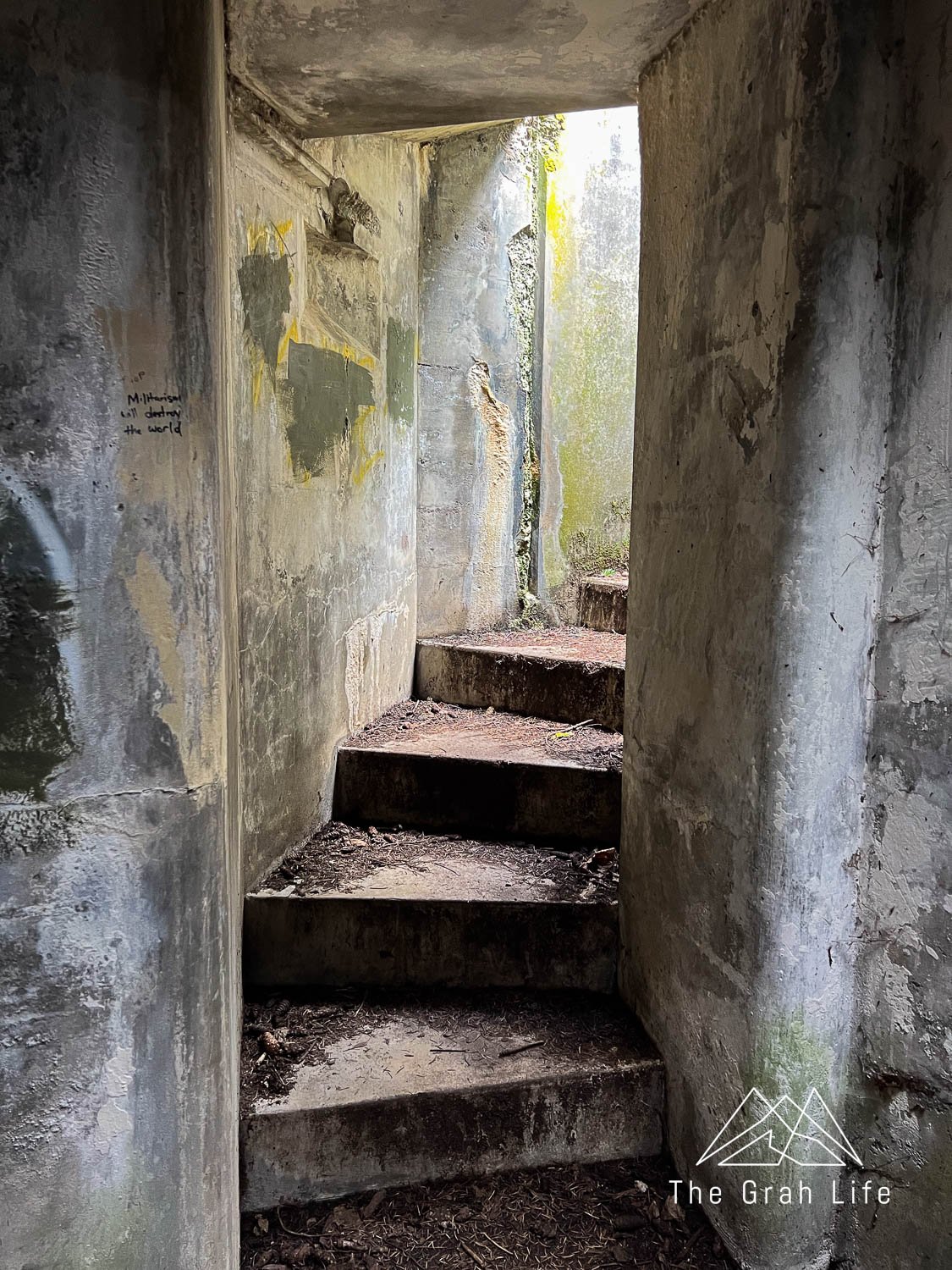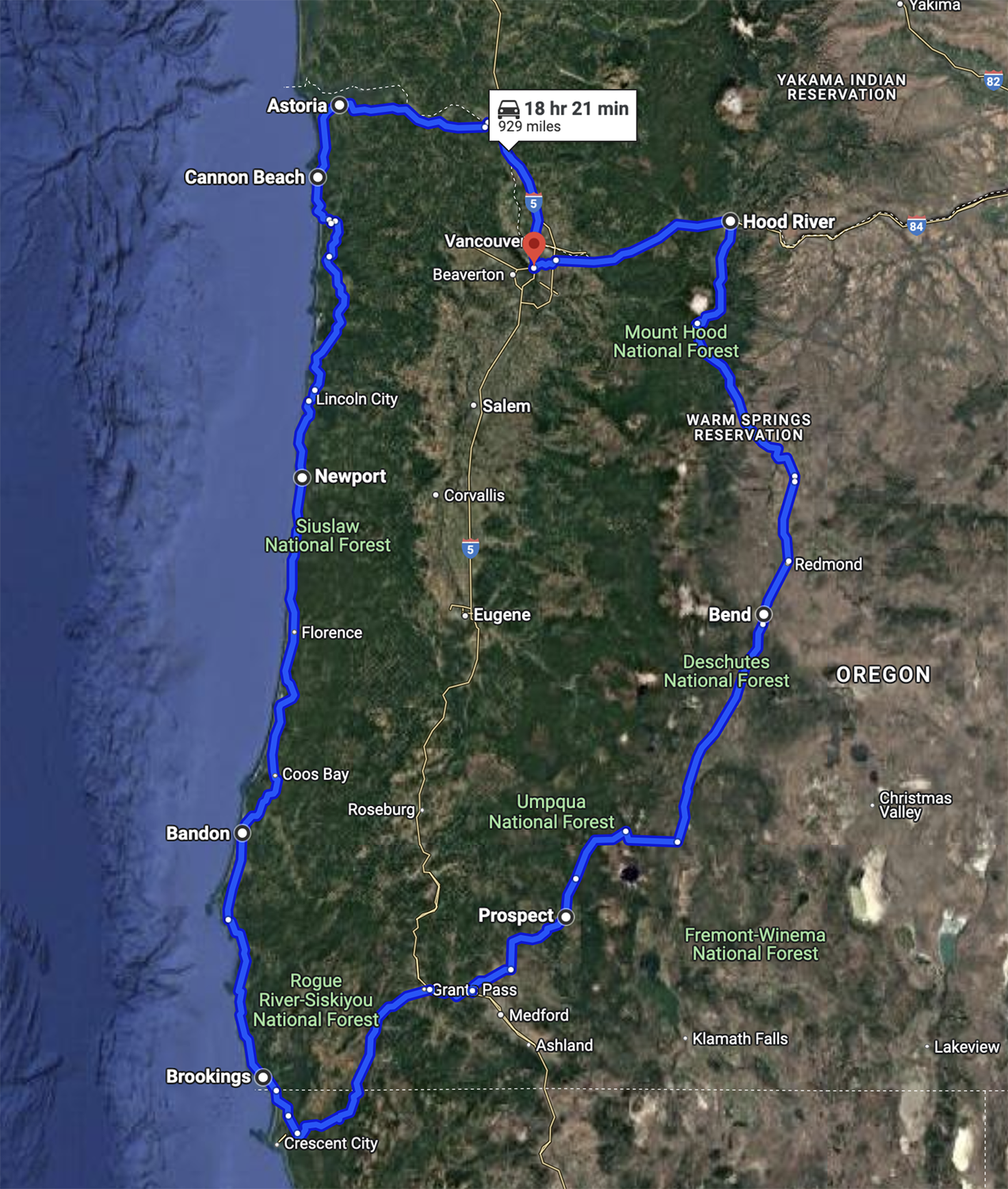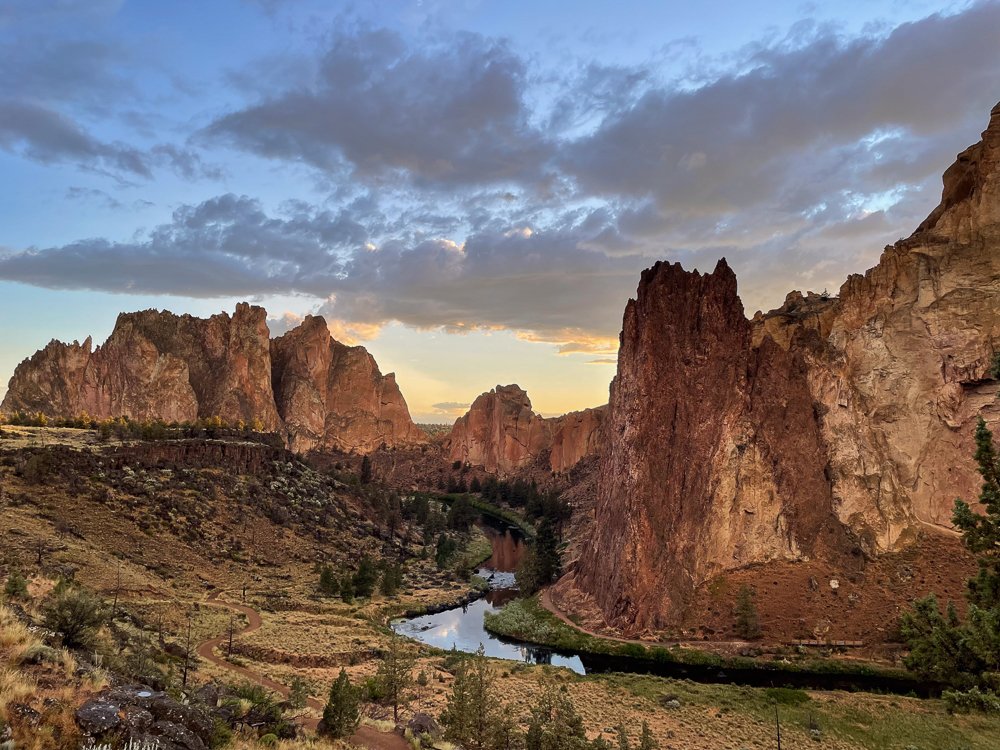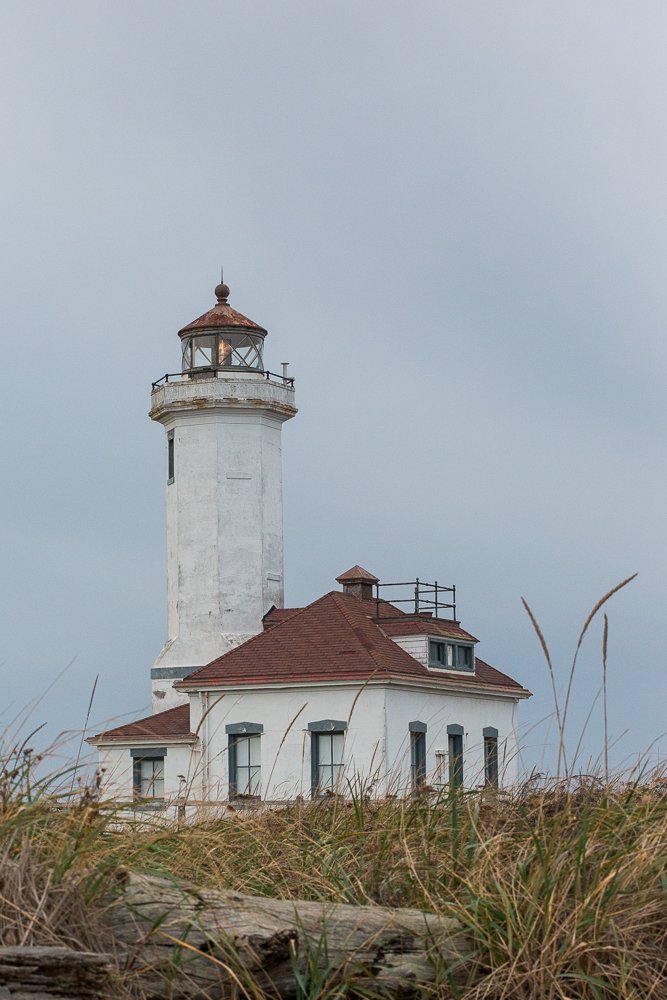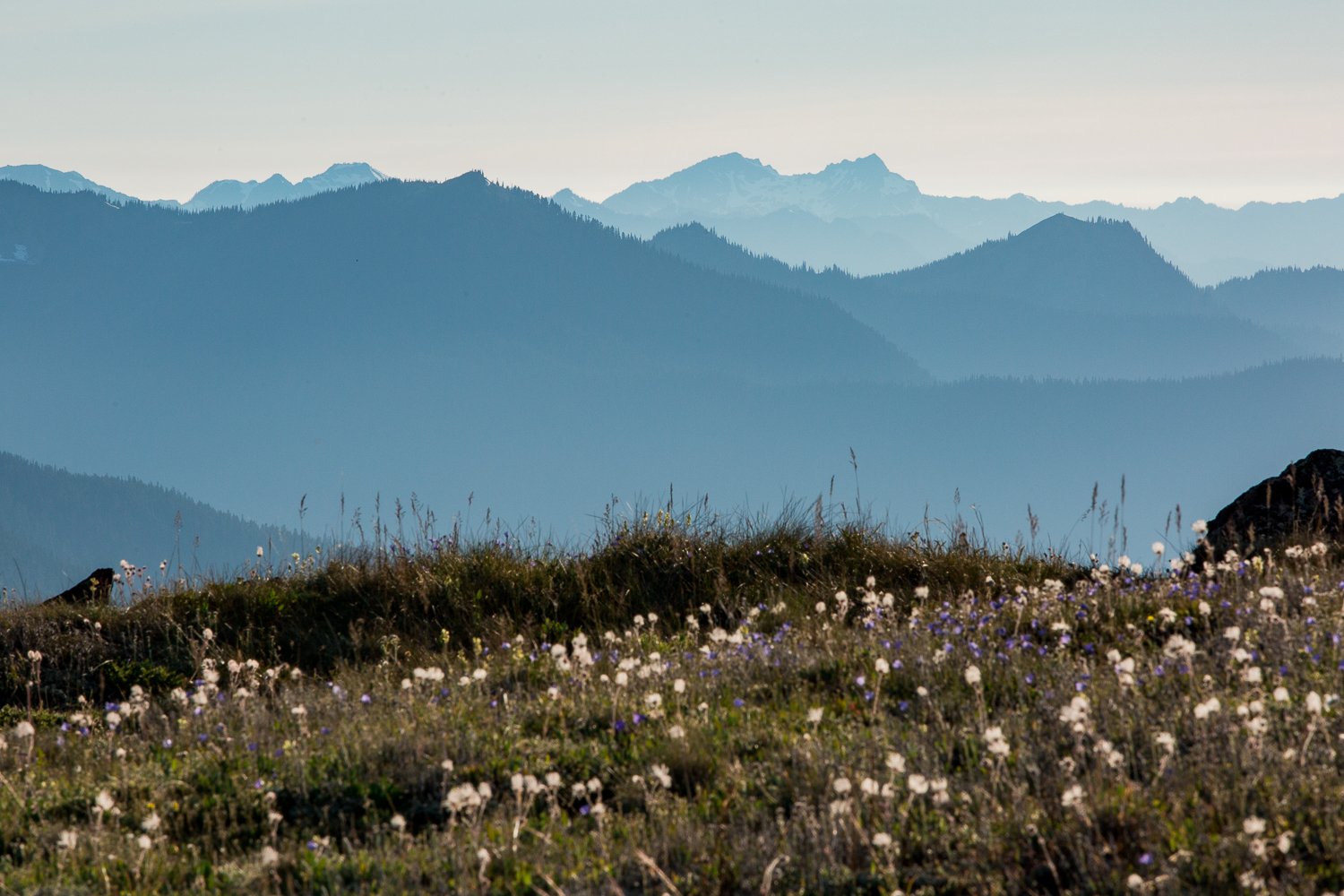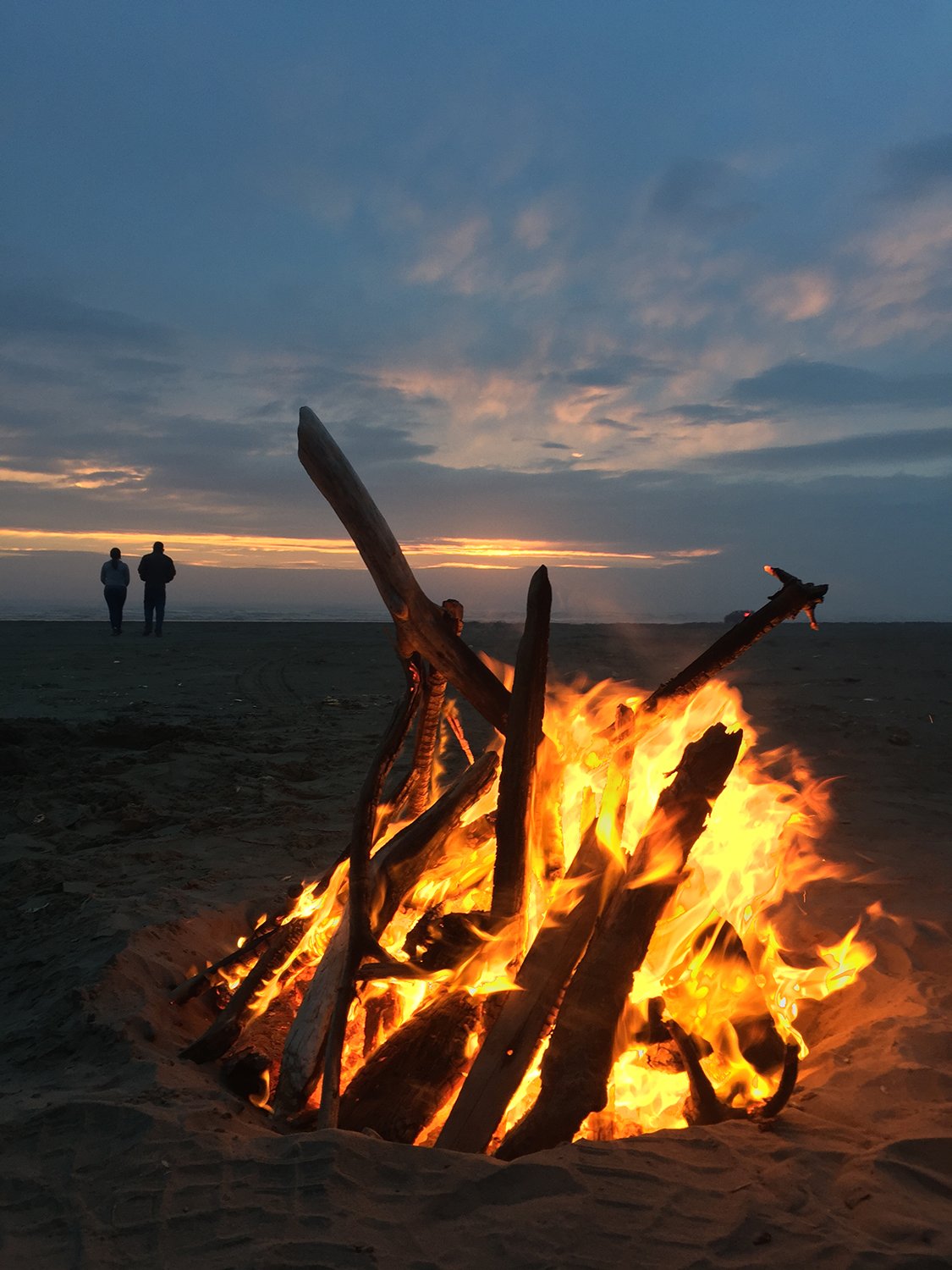Olympic National Park: Best Hikes, Itinerary, and Sights
Covering 922,641 acres, the Olympic National Park is so large and diverse! The park has three distinct ecosystems, including glaciated mountains, rainforest, and the coast. There is something for everyone to enjoy here, and there is so much to see.
We recommend staying between two and seven days near the park.
Click below to skip to a section:
Getting to the Olympic National Park
Getting to the Olympic National Park
The Seattle-Tacoma International Airport (SEA) is the nearest major airport, located two and a half hours away from Port Angeles, the heart of the Olympics.
To reach Port Angeles, we recommend ferrying from Seattle to Bremerton. This route gives you a great view of the Seattle skyline from the boat, is a fun way to travel, and helps you skip traffic along I-5. If you’ll be coming from the Portland area, drive along Highway 101 for the best views. Exploring the park with your own vehicle is the best way to experience the Olympic Peninsula.
Check out the video below to see how to take a car onto a ferry.
National park pass
You’ll also need to purchase a parking pass. The America the Beautiful Pass covers all national parks for a year, or you can opt to purchase a seven-day pass to the Olympic National Park.
You can buy passes at the Olympic National Park Visitor Center in Port Angeles, park entrances at Hurricane Ridge, the Hoh Rainforest, Sol Duc, and Staircase, online, or at REI in Seattle.
Best time to visit
Our favorite thing about the Olympics is that most of it is accessible year-round. When to visit is up to personal preference!
Summer (best for weather and hiking)
July — September
Always a moderate climate, you can expect summer temperatures to get up to the low 70s throughout the summer. By July, you’ll have your choice of high-elevation hikes to choose from, and all roads will be clear of snow. This is the best time to visit the park if you’re hoping to avoid rain during your visit or hike in the mountains.
Fall (best for waterfalls)
October — November
With a bit more rain — averaging 10 days of rain each month — fall is a beautiful time to visit the Olympics. There are fewer tourists, albeit some seasonal roads have closures beginning mid-November.
Winter (best for crowds)
December — March
The fear of rain keeps most tourists away throughout the winter in the Olympics. However, the amount of rain you’ll see varies greatly by region. The town of Forks, near the Hoh Rainforest, is the wettest place in North America. They receive up to ten feet of rain per year (about 20 days of rain each month throughout winter), while places like Port Angeles average 12 days of rain in the winter months.
Temperatures at lower elevations are generally in the 40s throughout the region and the overcast skies create those moody landscapes the Pacific Northwest is famous for.
Here in Washington, we say there is no such thing as bad weather, just poor wardrobe choices, so pack a raincoat (check out our packing list here) and bring waterproof shoes like hiking boots or rain boots. Don’t be afraid to visit during winter!
Spring (best for greenery and waterfalls)
February — June
With the start of the snow melt, the forests look particularly lush, and waterfalls begin to rage in spring. There’s still a chance you could have a few rainy days during your visit, but you can also expect temperatures to be in the 50s to 60s.
Where to stay
The Olympic peninsula is so large, that we suggest moving locations at least once during your visit to maximize your time spent enjoying the park. This blog has the best lodging suggestions and information about each town.
Camping
Camping is a great way to experience the Olympics! Many of the sites allow RV’s and accommodate vans or tents. Campgrounds do tend to book up quickly, so we recommend booking your site as soon as it goes on sale. We find it’s easiest to get a campsite between fall and spring.
This blog has all the best campgrounds on the Olympic Peninsula, in and around the Olympic National Park.
Hiking
The Olympic National Park is not lacking iconic hikes! There are over 135 miles of trails, and each region of the park is completely different from the next. We especially love that the hikes in the lowlands are accessible year-round. We’ll make specific hiking recommendations in the itinerary below. Check out this list for the best hikes in Washington — there is a section for the Olympic Peninsula!
Pro tip: Always look at recent trip reports on Washington Trails Association for any of the hikes you’re interested in. They’ll give you up-to-date information on the trail, snow conditions, mosquitoes, and more.
Best activities
Ranger-led programs
Check the park calendar for guided walks throughout the park, art exhibits, and a telescope program from Hurricane Ridge.
Tide pooling
You’ll need to check the tide chart before seeking tide pools. You’ll want to go at low tide — the lower the better. We love using tides.net because they have tide charts and a graph. Aim to start tide pooling an hour before the tide turns. Once the tide starts coming in, the waves stir up the pools making it harder to see animals.
Do wear a good pair of waterproof hiking boots or rainboots to tide pool in. Areas around the tide pools can be rocky and you’re likely to get you’re likely to get your shoes wet. Going barefoot isn’t a great option for this activity.
Beware that there can be more than one low tide in a day. If this is the case, the second low tide is usually not very low and won’t be conducive to good tide pooling.
Important: keep in mind when the tide will begin rising — it’s easy to get preoccupied spotting animals, and you don’t want to get stranded on a high section of beach. Pay attention to the time and know when the tide will begin rising. Keep an eye out for sneaker waves as well!
Paddling
It’s possible to kayak and paddle board on most lakes in the Olympic National Park. You’ll find seasonal rentals available at Lake Cushman at the Skokomish Park, Lake Quinault at the Lake Quinault Lodge, Lake Crescent at the Lake Crescent Lodge, and in Hoodsport from Hoodsport Wellness and Kayak Rentals.
If you want a different paddling experience, reserve a tour for a bioluminescent kayaking tour between spring and fall!
Lavender Farms
Sequim (near Port Angeles) is full of Lavender Farms. They’re generally open between May and October, offering things like you-pick lavender, lavender products, and even lavender-flavored ice cream. Check out this list to find the perfect farm to visit during your trip.
Crab Fest
Crab Fest takes place over one weekend in October in Port Angeles every year. Buy tickets for a Dungeness crab dinner or enjoy the free festival.
Farmer’s Market
Port Angeles has a year-round farmers market full of great food and all kinds of crafts. Find it at the Gateway Transit Center Pavillion downtown. Stop by Welly’s Real Fruit Ice Cream (New Zealand style) while you’re nearby!
Hurricane Ridge
Summer
Located an hour from Port Angeles, this is where you’ll see iconic mountain views. With panoramic views from the parking lot, it’s a great spot to watch the sunrise or sunset.
Although you don’t need to hike to appreciate the views here, hiking will give you extra time to soak in the sights. Check out Sunrise Point for a quick hike, Hurricane Hill and Klahhane Ridge for longer ventures, or Mount Angeles if you’re up for a class 3 scramble.
Pro tip: Check the Hurricane Ridge webcam to see up-to-date weather conditions before making the hour long drive up the mountain.
Hurricane Ridge summer shuttle
Traffic backs up at the entrance to Hurricane Ridge and there is usually a wait to enter the park at Hurricane Ridge. Consider taking the shuttle with Clallam Transit instead of driving yourself to bypass the wait. It costs $1 each way, or $2 round trip.
The bus picks you up from the Port Angeles Gateway Transit Center, where there is free parking, and makes stops at the Lake Angeles Trailhead, Switchback Trailhead, and Hurricane Ridge. You can see the bus schedule here.
This shuttle runs between Memorial Day weekend and Labor Day.
Meghann scrambling up Mount Angeles
Winter
In the winter months, Hurricane Ridge is only open Friday through Sunday between late November and late March (depending on snow levels). The road opens on these days when plows have cleared the roads, which can be as early as 8 am or as late as noon depending on conditions. Check here for road conditions and weather forecasts.
Hurricane Hill
Having chains in or on your vehicle is required throughout these months. We recommend purchasing chains at Les Schwab Tire Centers because they’ll allow you to return them if they go unused. If you are uncomfortable driving in snowy conditions, consider taking the shuttle (more on that below).
Since parking is limited at the top, the lot fills up early. Once that happens, cars are let in one by one as others leave. Arrive at 7 am to get an early spot in line, otherwise you may have a one-to-three-hour wait.
Once you’ve arrived, enjoy a small sledding hill (bring your own sleds), ranger-led snowshoes, or snowshoe the Hurricane Hill trail on your own. Beware, this trail does have avalanche dangers. On days with low avalanche dangers, you can snowshoe along the ridge to Hurricane Hill. Stay away from the edge of the ridge — it often has cornices that you can fall through. On days with moderate to high avalanche danger, wander through the meadows near the parking area.
Check here for avalanche forecasts and ask the rangers present for up-to-date conditions and recommendations.
Hurricane Hill snowshoe
Hurricane Ridge winter shuttle
In the winter consider taking a shuttle with the Olympic Hiking Co. It’s more expensive, but you’ll bypass lines and get a discount if you have a national park pass. They take reservations, have room for gear, and leave the bus at Hurricane Ridge for the day to serve as a warming area for shuttle passengers.
The shuttle is affected by the park’s delayed road openings, early closures, and complete closures for the day. This happens on occasion when large snow storms occur. If there is a road closure you can reschedule for free or cancel your reservation.
Olympic National Park 1 – 7 Day Itineraries
This Olympic National Park itinerary starts and ends in Seattle. It’s a very active itinerary – full of long drives, hiking suggestions, and beautiful sights. It covers the entire Highway 101 loop around the Olympic Peninsula.
We’ve designed this itinerary to help you see as much of the park as possible. Since it takes half a day to reach the park from Seattle, we recommend giving yourself at least three days to explore the park. If you have less than seven days, our itinerary addresses how to adjust this itinerary for your needs. If you have more than seven days to explore, we have suggestions on where and how to spend more time in Washington as well.
Is this tour for me?
Travel style:
Road trip
Optional hikes, ranging from easy to difficult
Great for all ages
What you’ll see:
Mountains
Rainforest
Waterfalls
Lakes
Beaches
Wildlife
Itinerary breakdown
Day 1: Ferry to the Olympic Peninsula
What this day involves:
Ferry from Seattle
Lunch at a historic logging town
Explore and watch the sunset from one of two locations:
Hurricane Ridge
Optional hike
The coast
Lodging: Port Angeles
Day 2: Waterfalls and Lake Crescent
What this day involves:
No hike waterfall
Lake Crescent
Optional view, forest, and waterfall hikes
Lake Crescent Lodge
Scenic docks
Rainforest
Commercial hot springs
Scenic drive
Optional waterfall and rainforest hikes
Lodging: Forks
Day 3: Rainforests and beaches
What this day involves:
Hoh Rainforest
Optional hikes
Lunch in Forks
Beaches
Great for sunset or tide pooling
Optional hikes
Lodging: Forks
Day 4: Coast
What this day involves:
Scenic drive
Wildlife viewing
Indigenous museum
Must-do coastal hike
Beach
Lodging: Forks
Day 5: Beaches, rainforest, waterfall, and Lake Quinault
What this day involves:
Beaches
Optional tide pooling
Kalaloch Lodge
Kalaloch Tree of Life
Must-do rainforest hike
Lake Quinault
Lake Quinault Lodge
Wildlife viewing
No hike waterfall
Lodging: Lake Quinault
Day 6: Lake Cushman
What this day involves:
Visit Hoodsport
Great seafood
Lake Cushman
Optional hiking and kayaking
Lodging: Lake Cushman
Day 7: Waterfalls
What this day involves:
Multiple waterfalls
Easy waterfall hike
Optional waterfall hike
No hike waterfall
Visit Port Townsend, a Victorian themed seaport
Great seafood
Explore historic WWII Forts
Relax in baths or saunas
Ferry to mainland
Optional lodging: Port Townsend
Historic WW II Fort
Leave no trace
The Olympic National Park has a highly sensitive ecosystem. It’s important to follow the Leave No Trace Principles. One of the easiest ways to do this is by staying on trails, out of the wildflower meadows, and by not climbing on fallen trees (they are part of the ecosystem).
What to pack
You never know what kind of weather to expect on the Olympic Peninsula so bring a bit of everything. You’ll want to be prepared for rain, sunshine, and colder weather, especially if you plan on spending time in the mountains or on the beaches — weather can change very quickly here! Our rule of thumb here is to bring one more layer than you think you’ll need for outings in the Olympics – check out our packing list here.
Want to know what we pack on our hikes? Check out this gear list!
Park tips
Gas stations
You’ll find gas stations in each town surrounding the Olympic National Park. Do plan your stops in advance since these towns are spread out. There are minimal electric car chargers near the Olympic National Park, so we’d advise using a gas-powered vehicle.
Restaurants
You’ll find restaurants at the park’s lodges, and towns surrounding the park. Since towns are small, things usually close early — plan your lunch and dinner stops in advance. Do bring snacks and water to munch on between towns.
Cell service
Cell service goes in and out throughout the Olympic Peninsula. You’ll have service near towns, but do not count on it between them. Load your GPS directions for the day from your lodging while you have WIFI before leaving for the day.
Wildlife
Watch for deer and elk on or near the road while you’re driving, especially at dawn and dusk. They tend to blend into the surrounding landscape and are often found standing in or running across the road. If you see one on the side of the road, slow down as they can make sudden moves and there may be others nearby.
Where to go next?
Road Trip all three of Washington’s National Parks
Check out this itinerary for the most efficient and scenic route to see the North Cascades, Olympics, and Mount Rainier, including stops in the famous town of Leavenworth, and more!
North Cascades
Take the ferry from Port Townsend to Coupeville, then head north on Whidbey Island and follow our guide to the Cascade Loop from there.
Mount Rainier
Take off from the Olympic Peninsula from Lake Quinault or Hoodsport to head to Mount Rainier. Check out our 1 to 5-day itinerary to get the most out of your trip there.
Seattle
Due to traffic, we recommend avoiding driving on I-5 near Olympia, Tacoma, Seattle, and Everett if possible. Taking a ferry to Seattle is the best (and most fun) way to do this.
Make the most of your trip with our Olympic National Park itinerary covering the entire Highway 101 loop.
Search the blog for more adventures! Try searching for topics such as “beach”, “hiking”, or “North Cascades National park”.




















